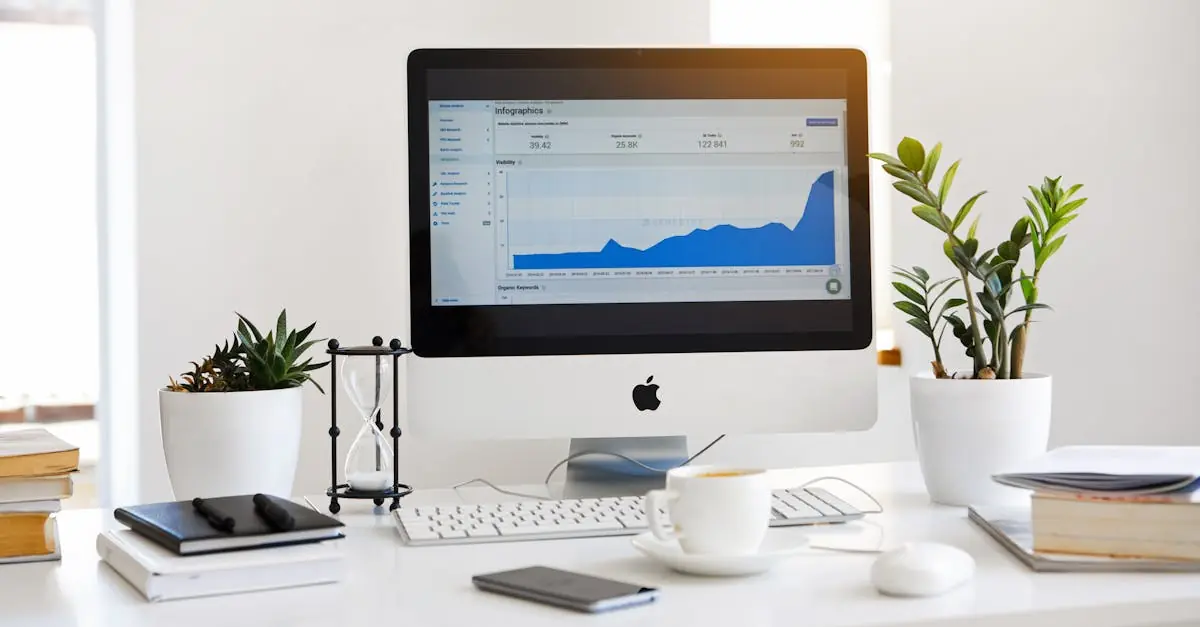Upgrading to a new iPhone is like getting a shiny new toy, but the excitement can quickly turn into a headache when it comes time to transfer all that precious data. After all, who wants to leave behind photos of last year’s epic vacation or that playlist that gets them through every Monday? Fear not! Transferring data from one iPhone to another doesn’t have to feel like rocket science.
Table of Contents
ToggleUnderstanding The Need To Transfer Data
Transferring data between iPhones ensures uninterrupted access to important information. Users often want to carry over contacts, calendars, photos, and apps from their old device to a new one. Maintaining continuity helps preserve memories and important documents.
Specific reasons exist for transferring data. Transitioning to a new phone typically involves wanting to keep cherished photos, playlists, and notes. Businesses frequently rely on timely access to contact information and calendar events.
Data transfer remains crucial for personal and professional reasons. It enables users to pick up where they left off without hassle or losing valuable information. Enhanced security features in new devices attract many users, but the process of moving data should remain straightforward.
Understanding the tools and methods available simplifies the experience. Apple’s built-in features like Quick Start make the process efficient. Third-party apps also offer seamless transfer options, giving users flexibility.
Focusing on the importance of transferring data alleviates common anxieties surrounding the upgrade process. Maintaining a connection to past experiences helps users enjoy new capabilities in their devices. Realizing the ease of this process fosters confidence in approaching the transition.
Preparation Steps Before Transfer
Preparing for data transfer ensures a smooth transition to a new iPhone. Following these steps simplifies the process and minimizes potential complications.
Backup Your Data
Backing up data safeguards important information during the transfer. Utilize iCloud, which offers seamless integration for automatic backups. Ensure iCloud is enabled on the old device in Settings under Apple ID. For larger backups, connect the old iPhone to a computer and use iTunes or Finder. Choose the ‘Back Up Now’ option to create a local backup. Confirm that all relevant data, including photos, messages, and app data, is included in the backup. Regular backups maintain data integrity, reducing the risk of data loss during the actual transfer process.
Check Compatibility
Checking compatibility between iPhones enhances a smooth data transfer. Both iPhones should run the latest iOS version for optimal performance. Navigate to Settings, tap General, then select Software Update to confirm. Verification of model compatibility is essential too. Older devices may have limitations in transferring certain types of content. Apple’s support website provides a list of compatible devices for reference. Complete this step to avoid surprises during the data migration, ensuring both devices function seamlessly with the latest features.
Methods To Transfer Data From iPhone To iPhone
Transferring data between iPhones can be straightforward with the right methods. The following options provide users with practical solutions for a seamless transition.
Using Quick Start
Quick Start simplifies the data transfer process. Users activate their new iPhone and hold it near the old device. A prompt appears on the old iPhone to initiate the transfer. After confirming the connection, users follow on-screen instructions to complete the process. This method speeds up data migration, including settings, apps, and content. It’s essential both devices run iOS 11 or later for compatibility.
Through iCloud
iCloud offers a convenient way to transfer data without physical connections. First, users back up their old iPhone to iCloud, ensuring important files are saved. Once the backup completes, users power on the new iPhone and choose to restore from an iCloud backup. Signing in with the Apple ID facilitates access to the latest backup. Data restoration includes contacts, photos, and app information. An active Wi-Fi connection speeds up this process, ensuring a smooth transfer.
Via iTunes/Finder
Using iTunes or Finder is a reliable method for data transfer as well. Users connect the old iPhone to their computer using a USB cable. After launching iTunes or Finder, they select the device and initiate a backup. Once the backup finishes, they connect the new iPhone and choose to restore from the existing backup. This method effectively transfers a full range of data, including media files and app settings. Ensuring the software is up to date mitigates potential issues during the transfer.
Troubleshooting Common Issues
Data transfer between iPhones may encounter common issues. These problems can disrupt the seamless upgrade experience, but identifying them helps ensure a smooth transition.
Error Messages
Error messages often appear during data transfer, signaling potential issues. Users may see messages about iCloud not syncing or incompatibility during the process. Restarting the devices usually resolves most errors. Ensuring both iPhones are fully updated with the latest iOS version is crucial. Additionally, checking that iCloud storage has enough space can eliminate storage-related errors. Users must verify that the Apple ID used for both devices matches for a successful transfer.
Connection Problems
Connection problems can impede data transfer between iPhones. When using Quick Start, users should ensure both devices are adequately charged and within proximity. If utilizing a USB connection, checking the cable and ports for damage becomes essential. Wi-Fi stability is necessary when relying on iCloud for data transfer. Proximity to the router can enhance connection strength, preventing interruptions. Restarting the Wi-Fi router may also improve connectivity. Users must confirm the mobile data settings allow backups whenever relevant.
Upgrading to a new iPhone can be an exciting yet daunting experience. With the right methods and tools at hand transferring data doesn’t have to be a hassle. By utilizing features like Quick Start or iCloud users can ensure a smooth transition while retaining all their important information.
Preparation is crucial so backing up data and checking compatibility can save time and frustration. Addressing potential issues proactively allows for a seamless upgrade experience. Embracing these strategies helps users confidently navigate their new devices without losing any cherished memories or vital information.





